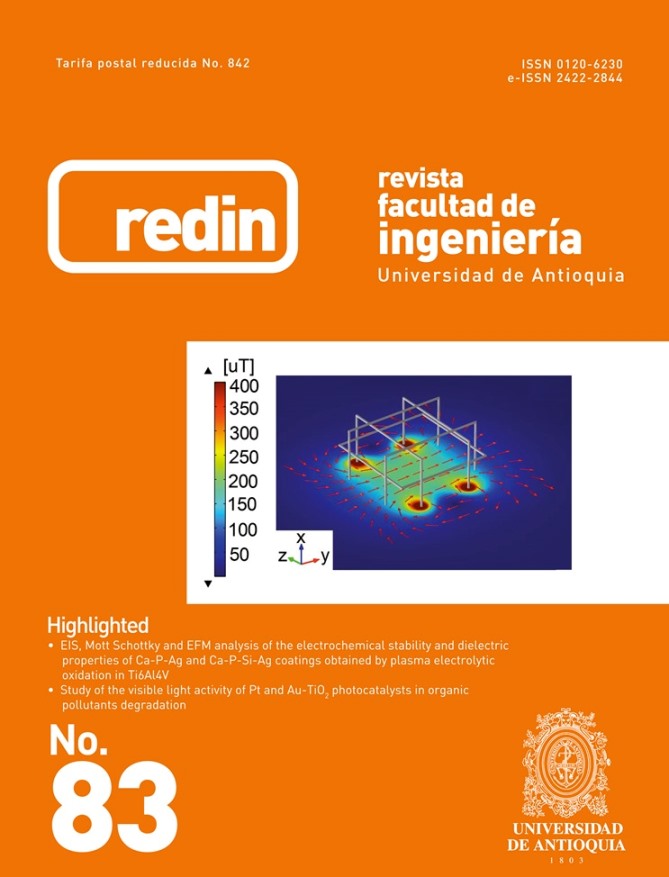Architectural capability analysis using a model-checking technique
DOI:
https://doi.org/10.17533/udea.redin.n83a12Keywords:
capability analysis, enterprise architectures, DoDAF, model-checking, requirements, TOGAFAbstract
This paper describes a mathematical approach based on a model-checking technique to analyze capabilities in enterprise architectures developed by using DoDAF and TOGAF architecture frameworks. Such approach base is the requirements’ validation related to the enterprise capabilities by employing operational or business artifacts associated with the dynamic behavior processes. We show how this approach can be used to quantitatively verify if the operational models in an enterprise architecture can achieve the enterprise capabilities by using a case study connected to a capability integration problem.
Downloads
References
C. Baier and J. P. Katoen, Principles of model checking. Cambridge, USA: MIT Press, 2008.
E. Karch, The Software Crisis: A Brief Look at How Rework Shaped the Evolution of Software Methodologies, 2011. [Online]. Available: https://blogs.msdn.microsoft.com/karchworld_identity/2011/04/04/the-software-crisis-a-brief-look-at-how-rework-shaped-the-evolution-of-software-methodolgies. Accessed on: May 25, 2017.
V. Lima et al., “Formal verification and validation of UML 2.0 sequence diagrams using source and destination of messages,” Electron. Notes Theor. Comput. Sci., vol. 254, pp. 143–160, 2009.
M. E. Beato, M. Barrio, C. E. Cuesta, and P. de la Fuente, “UML automatic verification tool with formal methods,” Electron. Notes Theor. Comput. Sci., vol. 127, no. 4, pp. 3–16, 2005.
S. Anwer and N. Ikram, “Goal oriented requirement engineering: A critical study of techniques,” in 13th Asia Pacific. Software Engineering Conference (APSEC), Bangalore, India, 2006, pp. 121–130.
IEEE, Systems and software engineering -- Vocabulary, IEEE Standard 24765, 2010.
F. Dandashi, R. Siegers, J. Jones, and T. Blevins, The Open Group Architecture Framework (TOGAF) and the US Department of Defense Architecture Framework (DoDAF), 2006. [Online]. Available: https://www.mitre.org/sites/default/files/pdf/06_0987.pdf. Accessed on: May 25, 2017.
K. Griendling and D. N. Mavris, “Development of a dodaf-based executable architecting approach to analyze system-of-systems alternatives,” in IEEE Aerospace Conference, Big Sky, MT, USA, 2011, pp. 1-15.
S. Sharma, J. Conduit, and S. R. Hill, “Organisational capabilities for customer participation in health care service innovation,” Australas. Mark. J., vol. 22, no. 3, pp. 179–188, 2014.
G. P. Castro, “Evaluación de un modelo de integración de herramientas software dirigido al sector biomédico-ortopédico,” Undergraduate thesis, Univ. Industrial de Santander, Bucaramanga Colombia, 2014.
A. Josey et al., TOGAF Version 9.1 - A Pocket Guide. 1st ed. Van Haren Publishing, 2011.
Z. G. Tao, Y. F. Luo, C. X. Chen, and M. Z. Wang, and F. Ni, “Enterprise application architecture development based on DoDAF and TOGAF,” Enterprise Information Systems, vol. 11, no. 5, pp. 627-651, 2017.
E. A. Emerson and E. M. Clarke, “Using branching time temporal logic to synthesize synchronization skeletons,” Science of Computer Programming, vol. 2, no. 3, pp. 241-266, 1982.
J. P. Queille and J. Sifakis, “Specification and verification of concurrent systems in CESAR,” in International Symposium on Programming, Turin, Italy, 1982, pp. 337–351.
D. Giannakopoulou, “Model checking for concurrent software architectures,” Ph.D. dissertation, Imperial College of Science, London, UK, 1999.
T. J. Blevins, J. Spencer, and F. Waskiewicz, TOGAF ADM and MDA® The Power of Synergy, The Open Group, 2004. [Online]. Available: http://www.opengroup.org/cio/MDA-ADM/. Accessed on: May 25, 2017.
S. Friedenthal, A. Moore, and R. Steiner, “OMG Systems Modeling Language (OMG SysMLTM) Tutorial,” INCOSE International Symposium, vol. 18, no. 1, pp. 1731–1862, 2008.
M. Y. Vardi and P. Wolper, “An automata-theoretic approach to automatic program verification,” in 1st Symposium on Logic in Computer Science (LICS), Cambridge, MA, USA, 1986, pp. 322–331.
J. Magee, J. Kramer, R. Chatley, S. Uchitel, and H. Foster, LTSA - Labelled Transition System. [Online]. Available: http://www.doc.ic.ac.uk/ltsa. Accessed on: Jan. 1, 2017.
D. Pandey, U. Suman, and A. K. Ramani, “An effective requirement engineering process model for software development and requirements management,” in 2nd International Conference on Advances in Recent Technologies in Communication and Computing (ARTCom), Kottayam, India, 2010, pp. 287–291.
G. A. Ricardo and J. Borbinha, Blog Post: Requirements and Capabilities, 2013. [Online]. Available: http://www.timbusproject.net/portal/blogs-news-items-etc/timbus-blogs/196-requirements-and-capabilities/. Accessed on: May 16, 2017.
K. A. Griendling, “Architect: the architecture-based technology evaluation and capability tradeoff method,” Ph.D. dissertation, Georgia Institute of Technology, Atlanta, USA, 2011.
Downloads
Published
How to Cite
Issue
Section
License
Copyright (c) 2017 Revista Facultad de Ingeniería Universidad de Antioquia

This work is licensed under a Creative Commons Attribution-NonCommercial-ShareAlike 4.0 International License.
Revista Facultad de Ingeniería, Universidad de Antioquia is licensed under the Creative Commons Attribution BY-NC-SA 4.0 license. https://creativecommons.org/licenses/by-nc-sa/4.0/deed.en
You are free to:
Share — copy and redistribute the material in any medium or format
Adapt — remix, transform, and build upon the material
Under the following terms:
Attribution — You must give appropriate credit, provide a link to the license, and indicate if changes were made. You may do so in any reasonable manner, but not in any way that suggests the licensor endorses you or your use.
NonCommercial — You may not use the material for commercial purposes.
ShareAlike — If you remix, transform, or build upon the material, you must distribute your contributions under the same license as the original.
The material published in the journal can be distributed, copied and exhibited by third parties if the respective credits are given to the journal. No commercial benefit can be obtained and derivative works must be under the same license terms as the original work.










 Twitter
Twitter